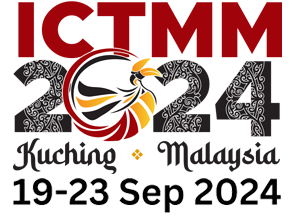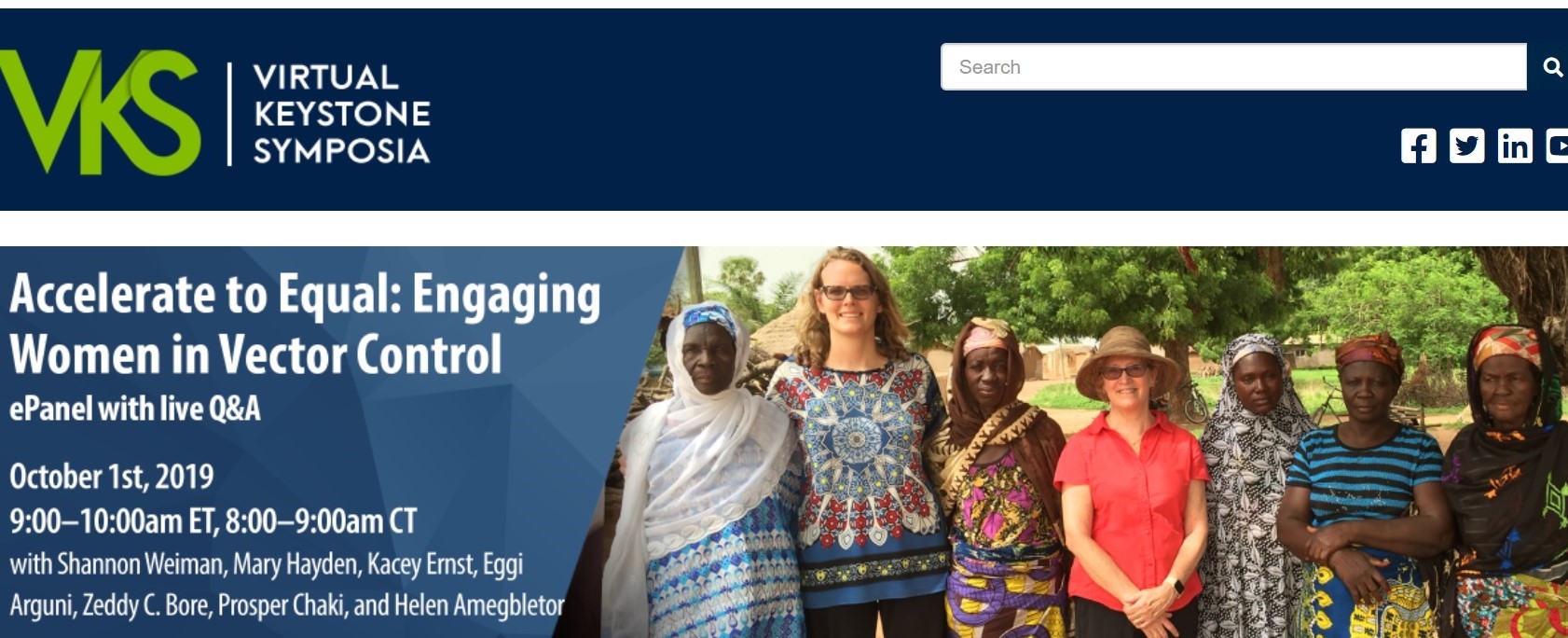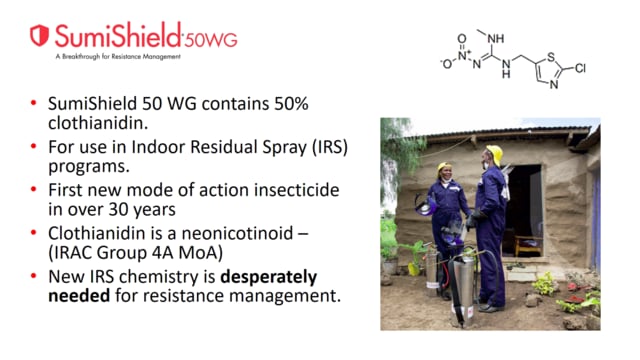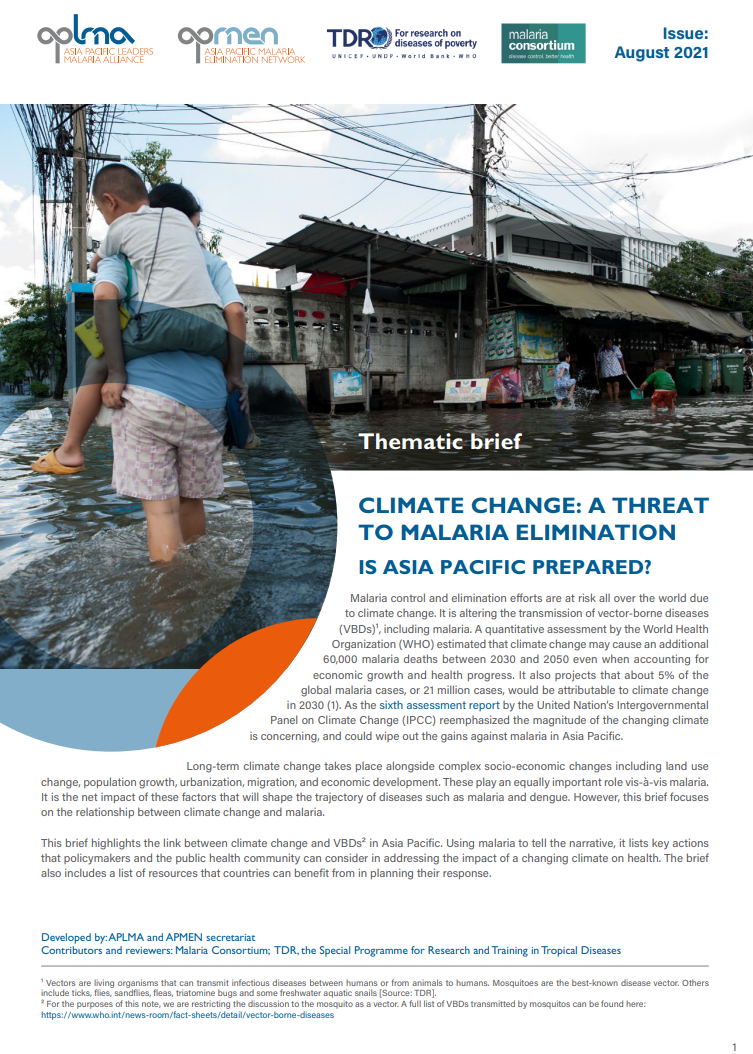21st International Congress for Tropical Medicine and Malaria (ICTMM) – 2024: Day 4
Sunday, 22nd September 2024
Published: 25/09/2024
This report is brought to you by the MESA Correspondents Sam Jian Hung, Muhammad Hafizu Sulaiman, Nurul Izza Zakaria, and Syaiful Rizal. Senior editorial support has been facilitated by Indra Vythilingam and Balbir Singh.
THEMES: THEMES: Basic Science | Epidemiology | Health Systems
MESA Correspondents bring you cutting-edge coverage from the ICTMM 2024 Congress “Global Responses and Interdisciplinary Research Towards Eliminating Tropical Diseases”.
Symposium P 12 – Eliminating Malaria in the Greater Mekong Subregion: How Can Success Be Ensured?
Sovannaroth Siv (National Center for Parasitology, Entomology and Malaria Control, Cambodia) explained the elimination approach in Cambodia, using the Last Mile elimination program to accelerate the elimination of Plasmodium falciparum in areas where remaining cases were focalized. The Last Mile intervention package includes the recruitment and training of village malaria workers (VMWs) and mobile malaria workers (MMWs), the provision of additional long-lasting insecticide-treated nets (LLINs) and long-lasting insecticide-treated hammock nets (LLIHNs), and conducting weekly fever screenings. It also provides intermittent preventive treatment for those going into the forest and targeted drug administration (TDA). Siv emphasized that by incorporating the Last Mile package, early detection of cases increased from 92% in 2021 to 100% in 2023. Additionally, the program ensured sufficient personal protection with 100% coverage using LLINs or LLIHNs, and 84.5% of participants completed two rounds of TDA within a one-month interval.
Chanaki Amaratunga (Mahidol Oxford Tropical Medicine Research Unit – MORU, Thailand) shared the development of the Triple Artemisinin-based Combination Therapies (TACT) project, called DeTACT, which was conducted at eight sites in Africa and two sites in Asia. Artemisinin-based combination therapy (ACT), the first-line treatment for malaria, has shown resistance in the Southeast Asia (SEA) region. The global spread of multidrug-resistant parasites could derail malaria elimination efforts and reverse the gains made in malaria control. The DeTACT project focuses on drug development, clinical trials, mathematical modeling, bioethics, market positioning, and communication and engagement. Preliminary results indicated that TACTs, specifically artemether-lumefantrine with amodiaquine (AL+AQ) and artesunate-mefloquine with piperaquine (ASMQ+PPQ), were well tolerated and safe to use. In Cambodia, randomized, partially blinded, placebo-controlled clinical trials demonstrated that AL+AQ is more effective than AL alone. A mathematical model also suggested that TACTs can delay artemisinin resistance and reduce treatment failure. Amaratunga emphasized the need for early engagement with the National Malaria Control Program (NMCP), to be crucial to ensuring a smooth transition to TACTs.
Frank Smithuis (Myanmar Oxford Clinical Research Unit, Myanmar) discussed the role of community health workers (CHWs) in malaria elimination in Myanmar. Access to healthcare services for these communities is extremely challenging. Most villagers only have access to untrained informal healthcare providers who do not offer malaria tests. Patients with undifferentiated fever receive a variety of inappropriate treatments. To overcome this issue, community health workers (CHWs) were trained, resulting in early detection and treatment of malaria, which led to reduced transmission. However, the malaria-CHW network is not cost-effective and is becoming less popular over time. Improvements were made by transitioning to an integrated CHW model that incorporates other disease management programs, such as tuberculosis, malnutrition, and non-communicable diseases. Integrating malaria into broader healthcare packages can improve the chances of eliminating malaria, as well as enhance overall health and save lives. This approach also helps to build community trust.
Cindy Chu (Lao-Oxford Mahosot Hospital Wellcome Trust Research Unit, Lao People’s Democratic Republic) proposed the Southeast Asia Dose Optimization of Tafenoquine (SEADOT) trial to determine whether a 50% increase in the current tafenoquine dose (300 mg) in SEA can provide better radical cure efficacy in 4 months. The study proposed to start recruiting at consultation time for malaria diagnosis. Then, screening and consent along with randomization in the study clinic was done and this marked day 0. Follow up in the study clinic was every week for the first month, and after that each month until the fourth. The challenges presented were several, the small number of individuals with malaria infections and the need of balancing multiple studies. Also, the cost per individual enrolled was very high as it included transportation and infrastructure at distal health delivery. The staff workload also posed a challenge along with the epidemiological changes in P. vivax showing different results. From there, Chu underlined the importance of funding, human resources and health systems for increasing the chances for success in research. Engagement in health systems, national programs, utilizing human resources from different global partners were identified as also crucial in driving quality research output.
Md Abul Faiz (Mahidol Oxford Tropical Medicine Research Unit – MORU, Thailand) addressed current malaria control and elimination tools evaluated and implemented in the Greater Mekong Subregion (GMS) such as targeted Mass Drug Administration (MDA), ITNs, vector control, among others. It was seen that targeted MDA could only achieve a transient reduction in malaria followed by resurgence. Therefore, it was hypothesized that the addition of mass R21/MatrixM (R21/MM) vaccination to current malaria elimination tools might provide additional protection against longer lasting interruptions. From this, a factorial, cluster-randomized controlled trial in Bangladesh is being prepared which will allocate 100 villages between four study arms (25 villages each): vaccines, MDA, combined vaccines, and MDA, or controls receiving the standard of care. This project, proposed to start in 2025, will have MDA and vaccine interventions given over 3 months, with a booster vaccination at 12 months. Passive case detection and prevalence surveys will be used to evaluate effectiveness over two years against P. falciparum infections. To make this an effective reality, multi-faceted community engagement was emphasized to enhance coverage and acceptability. Faiz then explained that novel communication tools such as posters, flipcharts, and short videos, will be created taking into consideration the multi-ethnic communities and vulnerable populations such as migrants and illiterate groups.
Malaria – Diagnostics 2
Dylan Pillai (University of Calgary, Canada) presented on active case detection (ACD) and treatment of malaria in pregnancy using Loop-Mediated Isothermal Amplification (LAMP) technology. Pillai hinted on worldwide over-exposure of malaria in pregnancy with over 30 million pregnant women at risk. Currently, intermittent preventive treatment (IPT) does not cover 1st trimester and is hindered by drug resistance and significantly poor compliance among pregnant women. They evaluated a promising molecular approach of LAMP that can screen and treat malaria in pregnancy at all trimester stages among over 2000 pregnant women in Ethiopia. The 3-year study demonstrated high sensitivity of LAMP in detecting asymptomatic malaria cases. They interestingly observed significantly greater weight gain in babies born under the LAMP method compared to the standard of care method. The study concluded the effectiveness and feasibility of molecular diagnostic tools such as lamps in malaria control among pregnant women in Ethiopia.
Phoutnalong Vilay (Ministry of Health, Lao People’s Democratic Republic) presented an application of the LAMP method in Lao PDR to accelerate malaria elimination in the country. P. falciparum and P. vivax are major parasites of human malaria in Lao PDR, a country with the goal of achieving malaria elimination by 2030. P. vivax cases in the country continue to rise which are related to hidden hypnozoites and low-density infections that go undetected using conventional diagnostics. As such Villey together with his team proposed to implement the LAMP method to detect asymptomatic cases in 25 health facilities in endemic areas due to its advantages of sensitivity, specification, cost-effectiveness, storage flexibility, and quick result processing time. The project trained researchers and health care workers from the endemic regions on LAMP for an effective operation and also aimed to provide new malaria guidelines that will incorporate LAMP in control interventions in the country.
Benoit Malleret (National University of Singapore, Singapore) presented a study that investigated the effect of methylene blue (MB) treatment on cerebral malaria in P. coatneyi-infected macaques. MB was originally synthesized for use as a textile dye. However, it has been reported to be used for the treatment of malaria in the 19th century and its effectiveness against even chloroquine resistant Plasmodium has been reported in recent years. The study administered MB as intravenous injection into six Plasmodium infected macaques. Their study revealed MB to be effective against cerebral malaria with an advantageous proactive effect that starts in the brain stem. Based on their findings, Malleret also revealed the potential of neutrophils in cerebral malaria pathogenesis and projects the use of macaques as models for severe malaria studies due to observed similarity of P. coatneyi to human P. falciparum.
Geoffrey McFadden (University of Melbourne, Australia) presented on the development of a simple kit to kill malaria parasites in mosquitoes. They fed mosquitoes by incorporating the drugs with sucrose and methylene blue to monitor feeding in the mosquitoes. Results showed that mosquitoes fed with the antimalarial atovaquone produced fewer sporozoites compared to other antimalarial drugs and the control group (no treatment). T111, a compound from atovaquone, seems to be responsible for this. He therefore presented T111 as a promising compound for malaria control in mosquitoes, having an interesting ability to eliminate sporozoites in Anopheles mosquitoes within one day. He further attributed the effect of T111 to its ability to act as an acridone inhibitor of cytochrome b in the parasite. Therefore, the kit incorporated T111 and sucrose onto a fabric for mosquitoes to feed with the objective to stop Plasmodium development in mosquitoes.
Alexander Maier (Australia National University, Australia) presented on harnessing cholesterol uptake in malaria parasites for therapeutic application. Malaria parasites rely on cholesterol for various activities including the host’s organ inversion. However, the parasite does not produce cholesterol and hence relies on cholesterol produced in host cells other than the red blood cells. Maier sees an opportunity to use cholesterol as a weapon to deliver drugs that will effectively fight malaria parasites. His findings revealed that administering a conjugate of cholesterol and primaquine (Chol-PQ) increased the effectiveness of primaquine against asexual stages of Plasmodium. In addition, the combination was found to be less toxic to host cells and was also found to induce the uptake of new drugs and increase the efficacy of antimalarial drugs. Not only on malaria, the method was found to be effective against other non-malaria parasites.
Mohd Adilin Bin Yaacob (Institute for Medical Research, Malaysia) presented an in-house multiplex assay that can be used for the identification of P. knowlesi and P. cynomolgi. He hinted on zoonotic malaria as a threat to the elimination in the region. Zoonotic malaria transmission is increasing in the region compared to a decade ago with the increase in transmission of simian malaria and its associated undiagnosed cases. Using computational analysis, optimization of reaction, and multiplex environment, they developed and tested the performance of their multiplex assay. The assay successfully detected single infections with 100% specificity with minimal probe interference commonly seen in most Multiplex qPCR. However, the assay performance was reduced in quadruple infection cases, which they attributed to variation in parasitemia levels in the Plasmodium species investigated. He concluded that the assay provided a reliable and sensitive method for detecting mono-infections involving P. knowlesi and P. cynomolgi. However, further optimization of the assay is required for the detection of mixed infections.
Sophie Collier (The University of Melbourne, Australia) explained a study on organellar inheritance in P. berghei. Mitochondria and plastids are unique organelles, with uniparental (maternal) inheritance predominating in most eukaryotes, although other patterns of inheritance also exist. To investigate organellar inheritance in a sex-specific manner, Collier developed single-sex P. berghei lines with fluorescently tagged apicoplasts and mitochondria. She reported that using a combination of lattice light-sheet and expansion microscopy, they observed that the mitochondrion and apicoplast are excluded from newly formed male microgametes during exflagellation. By contrast, female gametocytes possess elongated, perinuclear positioned apicoplasts and an expanded mesh-like mitochondrial network that encapsulates or cradles the nucleus throughout. Upon screening 1.9 million sporozoites across seven crosses, they identified a single male leakage event, thus demonstrating for the first time that drug resistance encoded by the mitochondrial genome of malaria parasites can, very infrequently, be inherited from the male parent. Overall, this work will better inform future therapeutic strategies targeting these organelles.
Taofic Bouwe (Ryukyus University, Japan) presented a proactive case detection intervention for asymptomatic malaria infections in a district in the Lao People’s Democratic Republic. Using a cross-sectional community-based survey they investigated the prevalence and factors associated with asymptomatic malaria infections involving over 600 participants in the region. Their study found prevalence of asymptomatic malaria of 1.8% out of 2% overall malaria prevalence from the study subjects. They interestingly found age to be a factor associated with asymptomatic cases with adults in their 40s having significantly higher asymptomatic malaria. Bouwe concluded that acquired immunity through repeated exposure in adults to be a contributing factor for the observed results. Bouwe also addressed protection measures and risk behaviour, noting that working at night in the forest and not using bed nets could increase the risk of being bitten by mosquitoes that spread malaria.
Zhaoqing Yang (Kunming Medical University, China) presented a study that shed light on the concerning trend of imported malaria cases in China with the aim to deepen understanding of the imported malaria cases and inform effective prevention and control measures in the country. Over the past decade, over 20,000 imported malaria cases were reported in the country, accounting for 98.71% of all malaria cases in the country, with P. falciparum as the major parasite responsible for the reported cases. She explained that the imported malaria cases were largely from Africa and with few from Asian countries. The trend according to Yang requires an urgent need for enhanced surveillance and management strategies, improved diagnostic capabilities, and more effective treatment protocols to address the imported cases.
Plenary 7 – Does prior exposure to vaccines or parasitic infection promote non-specific protection against unrelated pathogens?
Alan Sher (National Institutes of Health – NIH, United States) stated that childhood vaccination with Bacillus Calmette-Guérin (BCG) and helminth infections were hypothesized to provide microbial stimuli that might be conferring non-specific protection against COVID in resource limited countries/regions. From this, two different routes of BCG vaccination, subcutaneous (sc) and intravenous (iv), were delivered to mouse models, which were then infected with the SCV2 alpha variant of CoV-2. They found that the conventional cutaneous route provided no significant protection against subsequent SCV2 infection in mouse models but iv vaccination dramatically reduced the peak viral loads in the “mild” mouse model of SCV2 infection and protected against lethal disease in infected K18-hACE2 mice. However, the iv BCG vaccine (conventionally intradermal) is not clinically approved in practice. This study revealed potential new mechanisms of innate resistance to SCV2 for iv vaccination models. Firstly, the protection against SCV2 induced by iv BCG vaccination was dependent on both T lymphocytes and the cytokine IFN-γ. Besides, IFN-γ itself was found to be sufficient in limiting viral load and preventing disease in SCV2 infection models. Finally, one proposed mechanism -was that strong sustained local IFN-γ response was induced by iv BCG, which remodeled the pulmonary innate response and primed myeloid and epithelioid cells for enhanced control of pathogen challenge. Thus, IFN-γ priming of pulmonary epithelial cells enabled early control of SCV2 viral load. Prior N. brasiliensis (helminth) infections were found to partially protect mice against SARS-COV2 infection and disease. In contrast to iv BCG vaccinations, the effects of prior worm infection were late acting in sc (>7 days). The induced resistance was dependent on CD8+ T cells, simultaneously dependent on alveolar macrophages with alternatively activated M2 markers.
Symposium P27 (20952 & 20972) – Innovative Vector Control (SIT, Boosted SIT, ITT Wolbachia): Where Do We Stand About Their Efficacy Against the Vectors and Pathogens They Transmit?
Lu Deng (National Environment Agency, Singapore) presented a solution that provides high-throughput mosquito sex separation technology, within the context of the sterile male mosquito release approach. He discussed the limitations of existing sex separation methods used in Incompatible Insect Technology (IIT) which hinder the effectiveness of large-scale releases of sterile male mosquitoes. To address these limitations, the team under the Project Wolbachia Singapore developed a novel technology designed to optimize larval rearing conditions, thereby increasing the production of male over female mosquitoes for mass release. The internationally patented technology provides accurate 1st insta larvae counting, optimal larval rearing density, optimal larval food, accurate feeding regime, and environmental control. The technology tested in a study involving over 40,000 households was found to effectively reduce 90% of the Aedes population. According to Deng, this breakthrough will significantly scale up the IIT strategy, improving the effectiveness of efforts to control Aedes mosquito populations. This advancement represents a critical step forward in the fight against mosquito-borne diseases, not only in China but in other countries fighting vector-borne diseases. Deng mentioned that the technology has already been adopted by 16 countries around the world.
Josiane Etang (University of Bertoua, Cameroon) discussed a community-oriented approach to managing mosquito vectors and insecticide resistance. Vector-borne diseases account for 17% of the global burden of communicable diseases. Etang systematically reviewed 53 articles and presented her findings on mosquito-borne disease burdens in urban and rural Cameroon from 2002 to 2021, revealing a high prevalence of malaria in urban areas and increases in Anopheles species and Aedes aegypti. She outlined Kdr mutation, 1014F and 1014S as common resistance markers found among mosquitoes in the country. Interventions included distributing insecticide-treated bed nets (ITNs), improving environmental management, eliminating aquatic plants, managing water levels, and removing breeding containers. Key challenges identified were a lack of community awareness, insufficient coordination between health sectors, gaps in healthcare and community health workers, lack of education, and limited financial support. Potential new vector control tools include insecticides with various modes of action, spatial repellents, vector traps, and integrated approaches combining vector control with medicine and vaccines.
Published: 25/09/2024
This report is brought to you by the MESA Correspondents Sam Jian Hung, Muhammad Hafizu Sulaiman, Nurul Izza Zakaria, and Syaiful Rizal. Senior editorial support has been facilitated by Indra Vythilingam and Balbir Singh.
THEMES: Basic Science | Epidemiology | Health Systems



